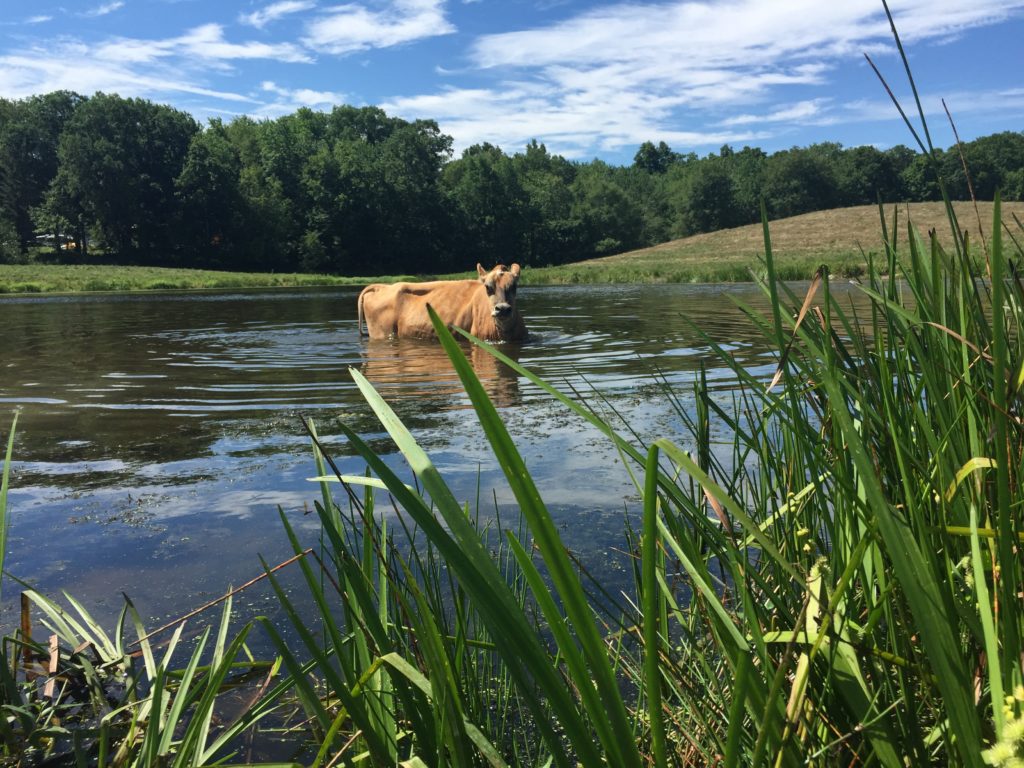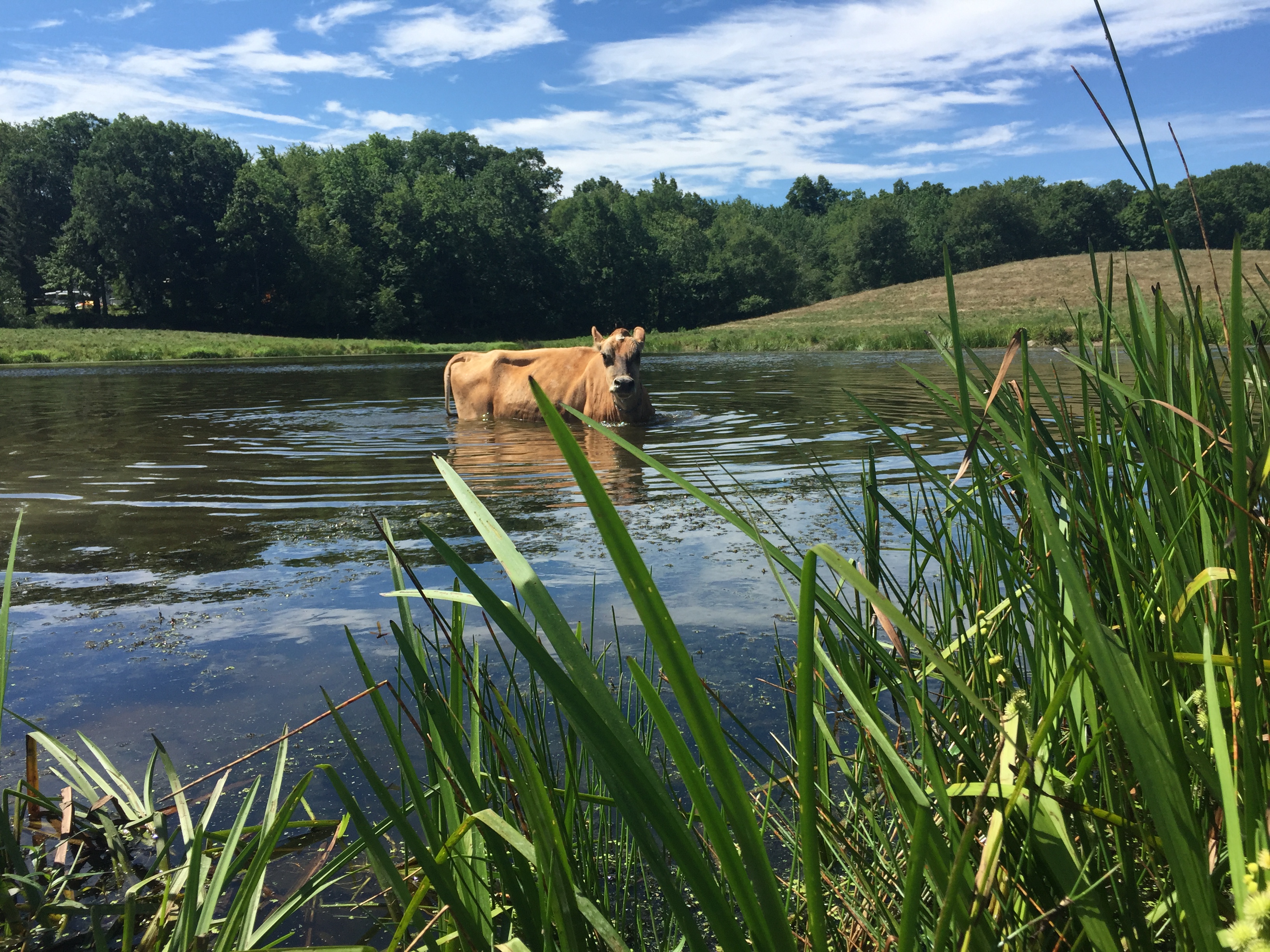Cows are big animals. Weighing in at around 1000 lb’s, with 4 stomach compartments digesting food at all hours of the day, cows naturally run a little bit warmer than humans. The normal body temperature of a cow is around 102 degrees Fahrenheit. Now this may not sound much different from the average human temperature of 98.6 degrees, but those extra 3-4 degrees make a difference, and when summer temperatures get warm, and stay warm, cows don’t exactly love it.
Just like we have a temperature range where we feel the most comfortable, cows have a range called the “Thermal Neutral Zone”, where they feel the most comfortable. For adult cows who are putting off a lot of heat, this range is 45-55 degrees Fahrenheit. This is far from the 90 degree days that we have been having recently, so we wanted to share a little bit about how cows handle the heat, and what we do to help them.
Cow’s are rugged animals, they are built to roam the prairies and hills eating grass and sheltering in the distant forests with their herds. While they are most comfortable in mild temperatures, they have several methods of dealing with the heat. Firstly, they will stick to shady areas where it is likely to be cooler, and stay out of direct sun as much as possible. Secondly they will alter their breathing pattern to panting- much like your dog does when he gets to warm. Panting helps move hot air out of the body, and brings slightly cooler air into the body, allowing the cow to reduce the amount of heat in her body by just a little bit. Cows also have the ability to store heat in their bodies, and deal with it over short periods of time and then dispersing the heat throughout the night when temperatures drop. This is less than ideal for them; it causes a lot of stress on their body, but in extreme conditions they will be most active at night during the cooler temperatures because of this.
Finally, the most effective way that cows deal with heat is by not eating as much. Eating and digesting food is a long and intense process for cows, and it causes a lot of heat to be generated within their bodies. So in warm weather, they eat less to reduce the heat load. When temperatures jump from 70 or 75 to 85 or 90 degrees, we notice a dramatic drop off in our cows food consumption, which, in addition to the general stress caused by the hot temperatures, results in a dramatic drop in milk production. This is something that has been well documented and observed all of the world.
Obviously, as dairy farmers, we don’t enjoy watching milk production drop as that is what drives our income and helps us pay our bills. But more importantly, we don’t like to watch our cows suffer through unbearable heat. For this reason, we have left large areas of the pasture shaded by trees, and have provided our cows with ponds throughout the pasture system (several in each of the pastures). On especially hot days the cows can be seen “swimming” in the ponds, or just hanging out enjoying the cool water. After going for a dip in the pond, the water will evaporate from their hide, taking some of the heat from their bodies with it. Additionally, we will bring the cows in earlier in the afternoon, getting them out of the sun, allowing them to rest in the shade, and creating a breeze for them with the help of a couple fans.
Ultimately, summer is not the favorite season for most cows as temperatures and high humidity levels tend to make them uncomfortable, but as their caretakers we do our best to support them and help keep them as comfortable as they can be.

